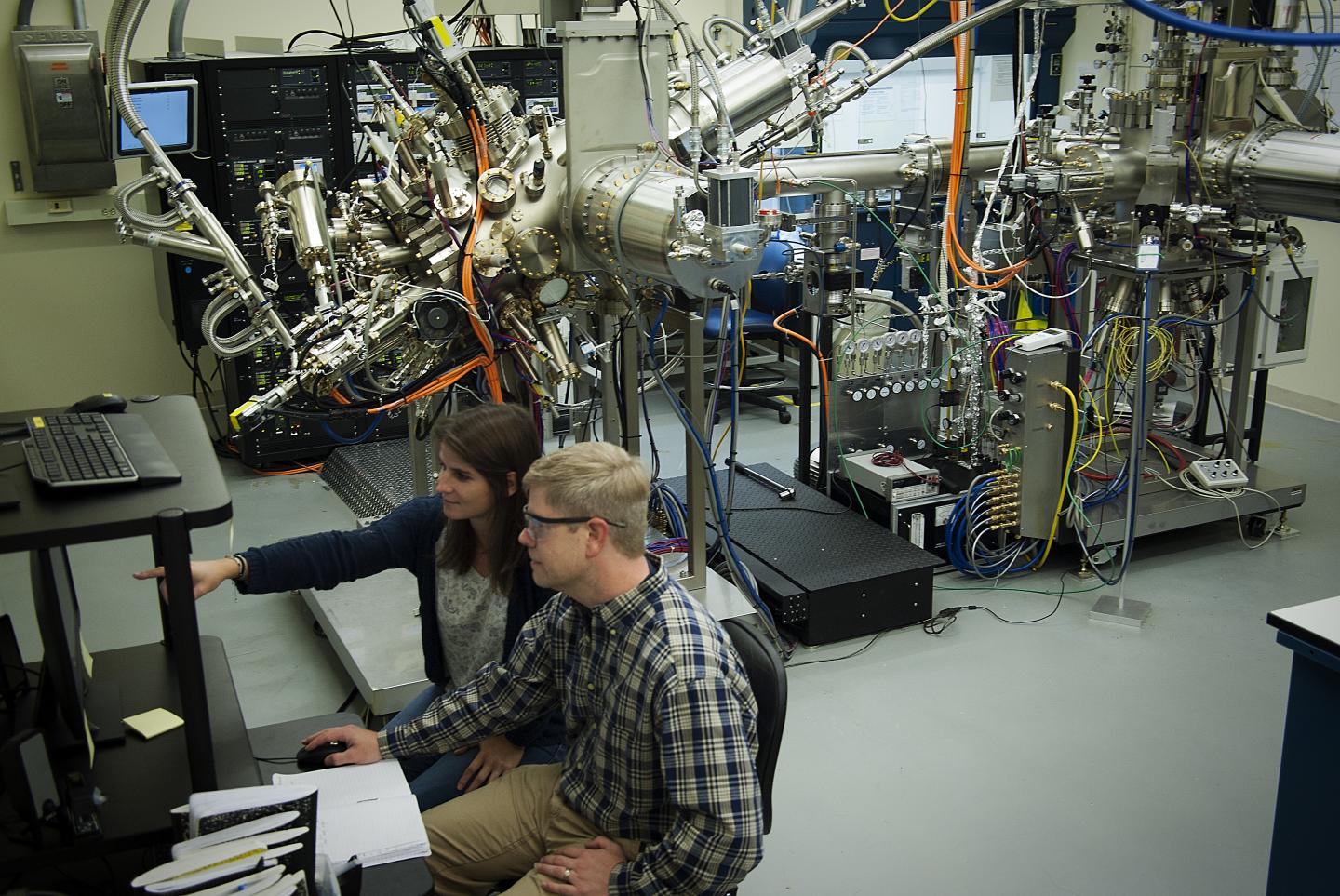Study shows evidence of topological superconductivity in planar structures

Credit: Microsoft Station Q Purdue photo
WEST LAFAYETTE, Ind. — Researchers have been trying for many years to build a quantum computer that industry could scale up, but the building blocks of quantum computing, qubits, still aren’t robust enough to handle the noisy environment of what would be a quantum computer.
A theory developed only two years ago proposed a way to make qubits more resilient through combining a semiconductor, indium arsenide, with a superconductor, aluminum, into a planar device. Now, this theory has received experimental support in a device that could also aid the scaling of qubits.
This semiconductor-superconductor combination creates a state of “topological superconductivity,” which would protect against even slight changes in a qubit’s environment that interfere with its quantum nature, a renowned problem called “decoherence.”
The device is potentially scalable because of its flat “planar” surface – a platform that industry already uses in the form of silicon wafers for building classical microprocessors.
The work, published in Nature, was led by the Microsoft Quantum lab at the University of Copenhagen’s Niels Bohr Institute, which fabricated and measured the device. The Microsoft Quantum lab at Purdue University grew the semiconductor-superconductor heterostructure using a technique called molecular beam epitaxy, and performed initial characterization measurements.
Theorists from Station Q, a Microsoft Research lab in Santa Barbara, California, along with the University of Chicago and the Weizmann Institute of Science in Israel, also participated in the study.
“Because planar semiconductor device technology has been so successful in classical hardware, several approaches for scaling up a quantum computer having been building on it,” said Michael Manfra, Purdue University’s Bill and Dee O’Brien Chair Professor of Physics and Astronomy, and professor of electrical and computer engineering and materials engineering, who leads Purdue’s Microsoft Station Q site.
These experiments provide evidence that aluminum and indium arsenide, when brought together to form a device called a Josephson junction, can support Majorana zero modes, which scientists have predicted possess topological protection against decoherence.
It’s also been known that aluminum and indium arsenide work well together because a supercurrent flows well between them.
This is because unlike most semiconductors, indium arsenide doesn’t have a barrier that prevents the electrons of one material from entering another material. This way, the superconductivity of aluminum can make the top layers of indium arsenide, a semiconductor, superconducting, as well.
“The device isn’t operating as a qubit yet, but this paper shows that it has the right ingredients to be a scalable technology,” said Manfra, whose lab specializes in building platforms for, and understanding the physics of, upcoming quantum technologies.
Combining the best properties of superconductors and semiconductors into planar structures, which industry could readily adapt, could lead to making quantum technology scalable. Trillions of switches, called transistors, on a single wafer currently allow classical computers to process information.
“This work is an encouraging first step towards building scalable quantum technologies,” Manfra said.
###
Work at Purdue was financially supported by Microsoft Corp.
Media Contact
Kayla Wiles
[email protected]
Original Source
https:/
Related Journal Article
http://dx.



